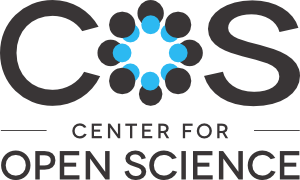Location
Our mission is to increase openness, integrity, and reproducibility of research.
These are core values of scholarship and practicing them is presumed to increase the efficiency of acquiring knowledge.
For COS to achieve our mission, we must drive change in the culture and incentives that drive researchers’ behavior, the infrastructure that supports their research, and the business models that dominate scholarly communication.
This culture change requires simultaneous movement by funders, institutions, researchers, and service providers across national and disciplinary boundaries. Despite this, the vision is achievable because openness, integrity, and reproducibility are shared values, the technological capacity is available, and alternative sustainable business models exist.
COS's philosophy and motivation is summarized in its strategic plan and in scholarly articles outlining a vision of scientific utopia for research communication and research practices.
Because of our generous funders and outstanding partners, we are able to produce entirely free and open-source products and services. Use the header above to explore the team, services, and communities that make COS possible and productive.
Members:
Resources
Displaying 396 - 400 of 447Direct payments, spatial competition and farm survival in Norway
We argue that interdependencies between farms are crucial for assessing effects of direct payments on farmers exit decisions. Using spatially explicit farm level data for nearly all Norwegian farms, a binary choice model with spatially lagged explanatory variables is estimated in order to explain farm survival from 1999 to 2009. We show that ignoring spatial interactions between farm leads to a substantial overestimation of the effects of direct payments on farm survival.
Competition for land and labour among individual farms and agricultural enterprises: Evidence from Kazakhstan's grain region
This article evaluates the recent evolution of farm structure in Kazakhstan's grain region against the reform objectives of the 1990s and the family farm theory that underpinned the latter. In the study region, super-large agroholdings, large-scale enterprises and smaller individual farms emerged side-by-side and now compete for resources in a homogenous production environment. Drawing on two survey rounds of farm-level data, we find that the agroholdings display the highest factor productivity and are the most competitive on land and labour markets among all farms.
Credit Markets and Land Ownership for Young and Beginning Farmers
Agricultural Credit, Land Ownership, Young and Beginning Farmers, Agricultural Finance, Farm Management, Land Economics/Use, Q14, H24, H25,
Determinants of Farmers' Preference for Sustainable Land Management Practices for Maize and Cassava Production in Ogun State, Nigeria
In order to ensure agricultural sustainability, as highlighted in the millennium development goals, it has become necessary to focus policies on enhancing sustainable land management, especially in vulnerable areas of sub-Saharan Africa. Hence there is the need for this study which was designed to analyze the determinants of farmers’ adoption of Sustainable Land Management Practices (SLMP) in the production of maize and cassava in Ogun State. Multi-stage sampling technique was adopted in this study. The data for study was collected from 338 farmers with the use of questionnaire.
Assessment of Irrigation Land Suitability and Development of Map for the Fogera Catchment Using GIS, South Gondar
Irrigation land suitability assessment and mapping play an imperative role for sustainable utilization of scarce physical land resources. The objectives of this study were to prepare spatial data base of physical land resources for irrigated agriculture and to assess land suitability for irrigation and developing suitable area map for the study area. The study was conducted at Fogera catchment, South Gondar. Soil and water sampling spots were selected based on free and grid survey techniques and their locations were taken using Global Positioning System (GPS).



